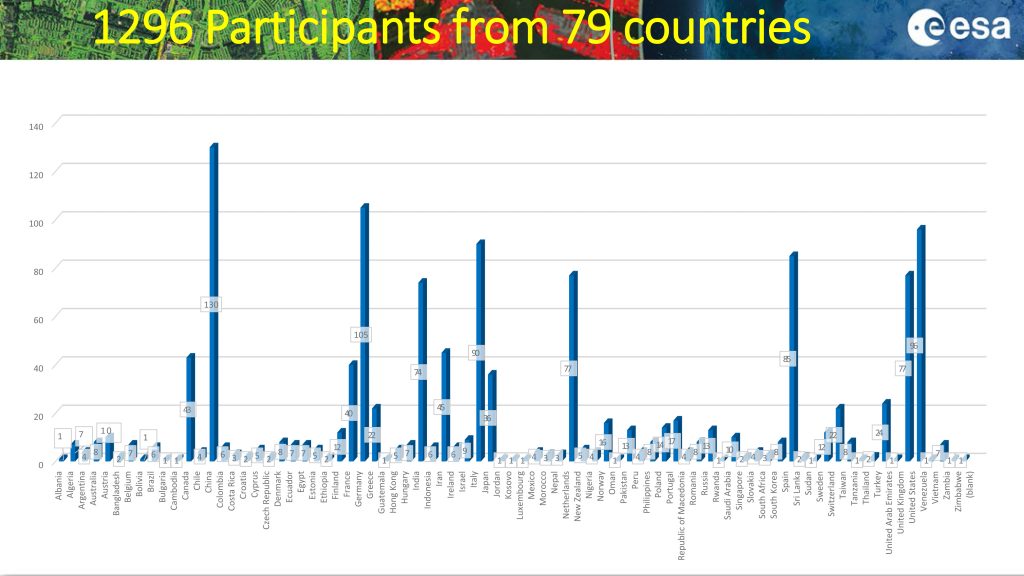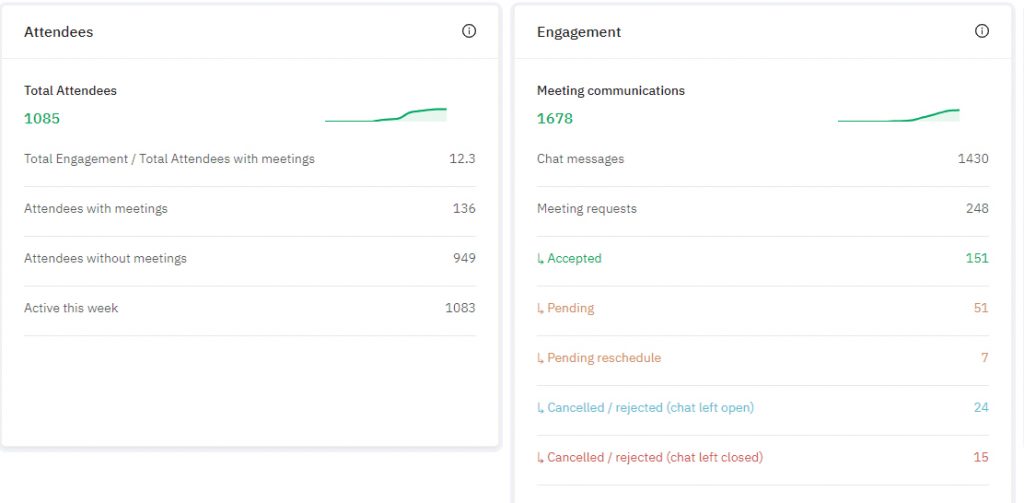
FRINGE 2021 Closing Session tweet and some figures of the intense week:
- 2 ESA Sessions, 9 Thematic Sessions with 102 orals and 4 Technical discussions;
- 272 e-posters
- 1296 registered participants!
FRINGE final participant statistics

FRINGE on-line event statistics on the Brella platform

To re-watch the event, please open the detailed agenda and use the “Watch replay” function below the session title.
Scientific Committee
Nico Adam
DLR
Falk Amelung
University of Miami
Anca Anghelea
ESA
Homa Ansari
DLR
Hermann Baehr
Shell
Gidon Baer
Geological Survey of Israel
Richard Bamler
DLR
Marta Béjar-Pizarro
Instituto Geológico y Minero de España (IGME)
Manuela Bonano
IREA-CNR
Roland Burgmann
University of California, Berkeley
João Catalão
Universidade Lisboa
Ling Chang
University of Twente
Mario Costantini
e-GEOS
Michele Crosetto
Institute of Geomatics
Nicolas d’Oreye
European Center for Geodynamics and Seismology
Francesco De Zan
DLR
John Dehls
NGU
Jose Manuel Delgado Blasco
Microgeodesia Jaén Research Group – University of Jaén
Dominique Derauw
CSL
Xiaoli Ding
Hong Kong Polytechnical University
Clémence Dubois
University of Jena
Michael Eineder
DLR
Alessandro Ferretti
TRE Altamira
Eric Fielding
JPL
Magdalena Fitrzyk
RSAC/ESA-ESRIN
Masato Furuya
Hokkaido University
Ramon Hanssen
TU Delft
Alexandra Heck
Karlsruhe Institute of Technology
Rachel Holley
CGG-NPA
Andy Hooper
University of Leeds
Maya Ilieva
Wroclaw University of Environmental and Life Sciences, Institute of Geodesy and Geoinformatcis
Mi Jiang
Sun Yat-sen University
Sigurjon Jonsson
KAUST
Gini Ketelaar
Shell
Riccardo Lanari
IREA-CNR
Yngvar Larsen
NORCE
Cécile Lasserre
CNRS
Tom Rune Lauknes
NORCE
Mingsheng Liao
Wuhan University
Rowena Lohman
Cornell University/Department of Earth & Atmospheric Sciences
Zhong Lu
Southern Methodist University
Paul Lundgren
JPL
Pooja Mahapatra
Fugro
Jordi Mallorqui
Universitat Politècnica de Catalunya
Michele Manunta
IREA-CNR
Mariarosaria Manzo
IREA-CNR
Petar Marinkovic
PPO.labs
Philippa Mason
ICL – Imperial College London
Thomas Nagler
Enveo
Giovanni Nico
IAC-CNR
Alessandro Parizzi
DLR
Amy Parker
Curtin University
Paolo Pasquali
Sarmap
Zbigniew Perski
Polish Geological Institute
National Research Institute
Virginie Pinel
ISTerre-UMR CNRS
Muriel Pinheiro
DLR
Pau Prats
DLR
Eric Rignot
University of California
Fabio Rocca
Politecnico di Milano
Helmut Rott
Enveo
Line Rouyet
Norce
Sami Samiei Esfahany
University of Tehran
David Sandwell
Scripps
Michael Schlund
University Twente
David Small
University of Zurich – Irchel
Salvatore Stramondo
INGV
Tazio Strozzi
GAMMA
Henriette Sudhaus
Kiel University
Jianbao Sun
China Earthquake Administration
Stefano Tebaldini
Politecnico di Milano
Freek van Leijen
TU Delft
Richard Walters
Durham University
Christelle Wauthier
Pennsylvania State University
Shimon Wdowinski
Florida International University
Urs Wegmüller
GAMMA
Howard Zebker
Stanford University
Xiaoxiang Zhu
DLR


